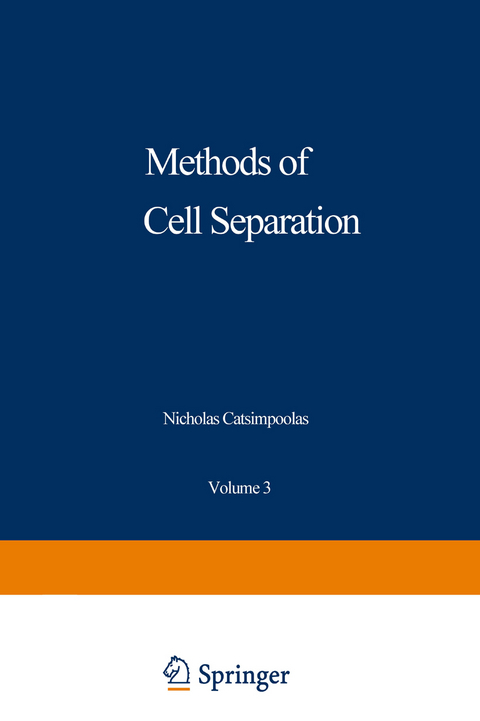
Methods of Cell Separation
Springer-Verlag New York Inc.
978-1-4684-3664-8 (ISBN)
1 Computer Analysis of Lymphocyte Images.- I. Introduction.- II. Selection of Equipment.- III. Computer Programs.- IV. Analytical Tasks.- V. Application of Image Analysis to Biological Problems.- References.- 2 Principles of Continuous Flow Cell Separation in a Circumferential Flow Disposable Channel.- I. Introduction.- II. Design Concepts.- III. Channel Description.- IV. Channel Operation.- V. Channel Performance.- VI. Summary.- References.- 3 Magnetic Microspheres in Cell Separation.- I. Background.- II. Procedures.- III. Examples.- References.- 4 Isolation of Human Blood Phagocytes by Counterflow Centrifugation Elutriation.- I. Introduction.- II. Isolation of Granulocytes from Human Blood.- III. Isolation of Human Blood.- IV. Appraisal of Counterflow Centrifugation for the Isolation of Leukocytes.- References.- 5 Biological Methods for the Separation of Lymphoid Cells.- I. General Considerations.- II. Rosetting Methods.- III. Affinity Chromatography of Cells and Cellular Immunoabsorbent Methods.- IV. Elimination of Lymphocyte Subpopulations by Antisera Plus Complement Treatment.- V. Elimination of Specific Lymphocyte Subpopulations by Selective Incorporation of High-Specific-Activity Radioisotopes (“Suicide” Methods).- VI. Separation of Lymphocyte Subpopulations by the Use of Lectins.- VII. Conclusions.- References.
| Reihe/Serie | Biological Separations |
|---|---|
| Zusatzinfo | XII, 204 p. |
| Verlagsort | New York, NY |
| Sprache | englisch |
| Maße | 152 x 229 mm |
| Themenwelt | Medizin / Pharmazie ► Physiotherapie / Ergotherapie ► Orthopädie |
| Studium ► 1. Studienabschnitt (Vorklinik) ► Anatomie / Neuroanatomie | |
| Naturwissenschaften ► Biologie ► Zellbiologie | |
| Technik ► Medizintechnik | |
| ISBN-10 | 1-4684-3664-3 / 1468436643 |
| ISBN-13 | 978-1-4684-3664-8 / 9781468436648 |
| Zustand | Neuware |
| Haben Sie eine Frage zum Produkt? |
aus dem Bereich


